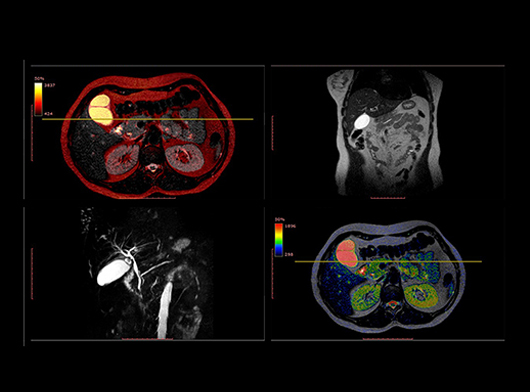
It uses a powerful magnetic field, radio waves and a computer to evaluate the liver, gallbladder, bile ducts, pancreas and pancreatic duct for the disease, if any. It produces detailed images of the hepatobiliary and pancreatic systems.
It is a non-invasive and does not involve exposure to radiation
